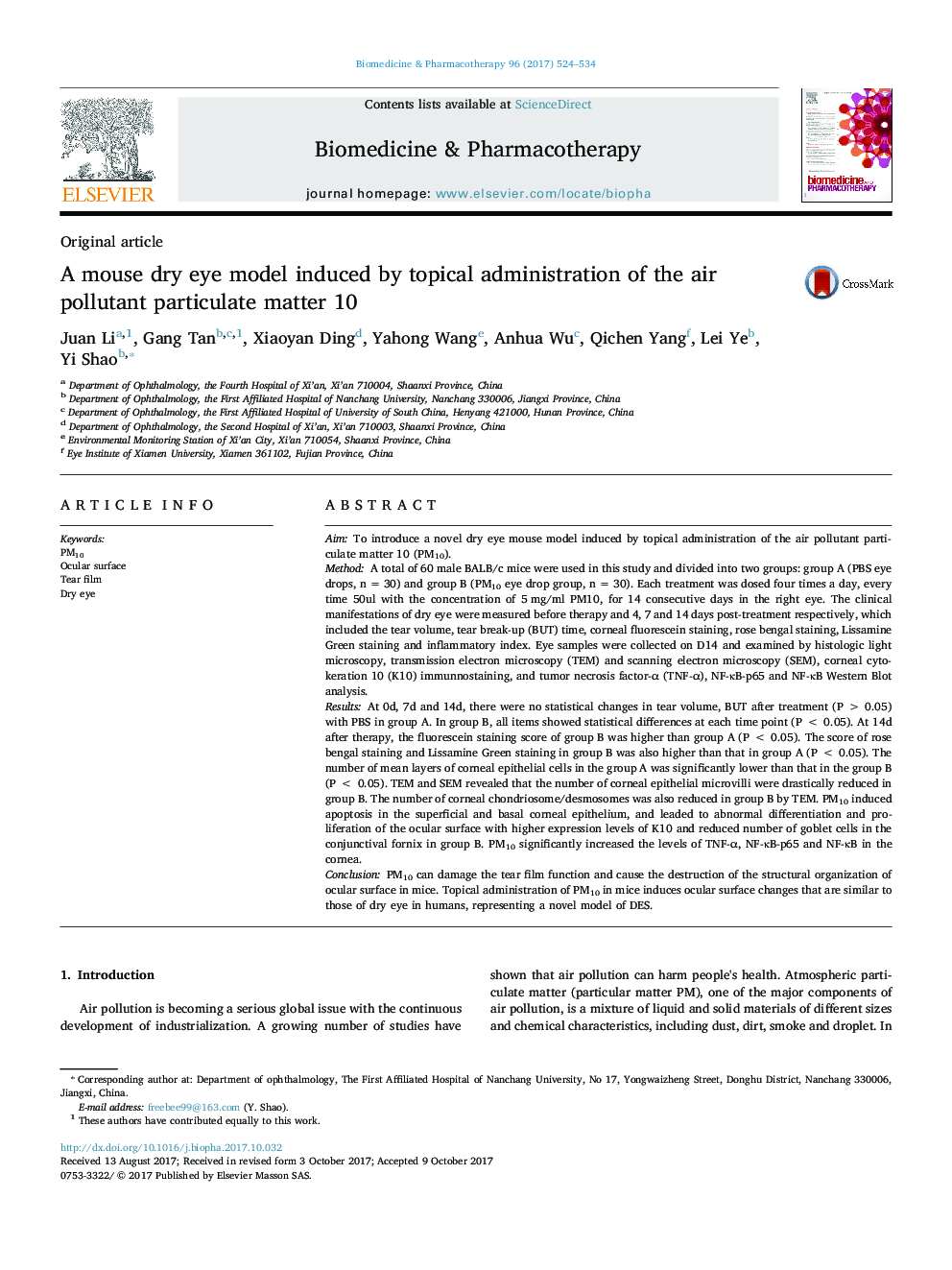| کد مقاله | کد نشریه | سال انتشار | مقاله انگلیسی | نسخه تمام متن |
|---|---|---|---|---|
| 5552477 | 1557946 | 2017 | 11 صفحه PDF | دانلود رایگان |
AimTo introduce a novel dry eye mouse model induced by topical administration of the air pollutant particulate matter 10 (PM10).MethodA total of 60 male BALB/c mice were used in this study and divided into two groups: group A (PBS eye drops, n = 30) and group B (PM10 eye drop group, n = 30). Each treatment was dosed four times a day, every time 50ul with the concentration of 5 mg/ml PM10, for 14 consecutive days in the right eye. The clinical manifestations of dry eye were measured before therapy and 4, 7 and 14 days post-treatment respectively, which included the tear volume, tear break-up (BUT) time, corneal fluorescein staining, rose bengal staining, Lissamine Green staining and inflammatory index. Eye samples were collected on D14 and examined by histologic light microscopy, transmission electron microscopy (TEM) and scanning electron microscopy (SEM), corneal cytokeration 10 (K10) immunnostaining, and tumor necrosis factor-α (TNF-α), NF-κB-p65 and NF-κB Western Blot analysis.ResultsAt 0d, 7d and 14d, there were no statistical changes in tear volume, BUT after treatment (P > 0.05) with PBS in group A. In group B, all items showed statistical differences at each time point (P < 0.05). At 14d after therapy, the fluorescein staining score of group B was higher than group A (P < 0.05). The score of rose bengal staining and Lissamine Green staining in group B was also higher than that in group A (P < 0.05). The number of mean layers of corneal epithelial cells in the group A was significantly lower than that in the group B (P < 0.05). TEM and SEM revealed that the number of corneal epithelial microvilli were drastically reduced in group B. The number of corneal chondriosome/desmosomes was also reduced in group B by TEM. PM10 induced apoptosis in the superficial and basal corneal epithelium, and leaded to abnormal differentiation and proliferation of the ocular surface with higher expression levels of K10 and reduced number of goblet cells in the conjunctival fornix in group B. PM10 significantly increased the levels of TNF-α, NF-κB-p65 and NF-κB in the cornea.ConclusionPM10 can damage the tear film function and cause the destruction of the structural organization of ocular surface in mice. Topical administration of PM10 in mice induces ocular surface changes that are similar to those of dry eye in humans, representing a novel model of DES.
Journal: Biomedicine & Pharmacotherapy - Volume 96, December 2017, Pages 524-534
